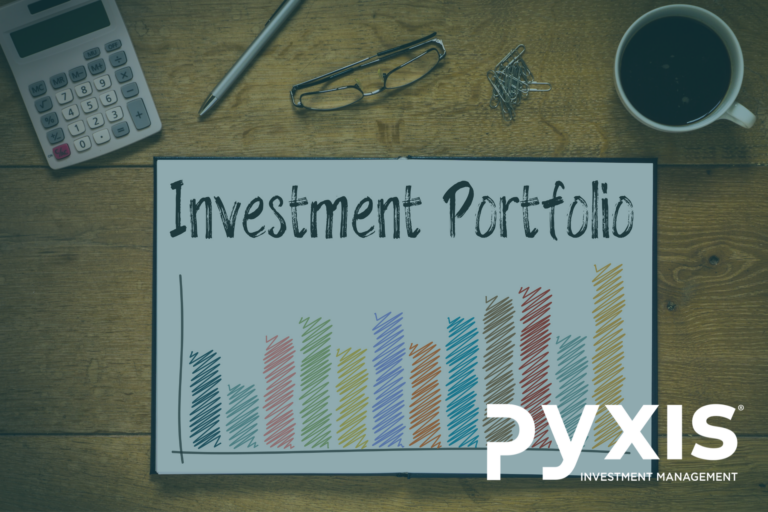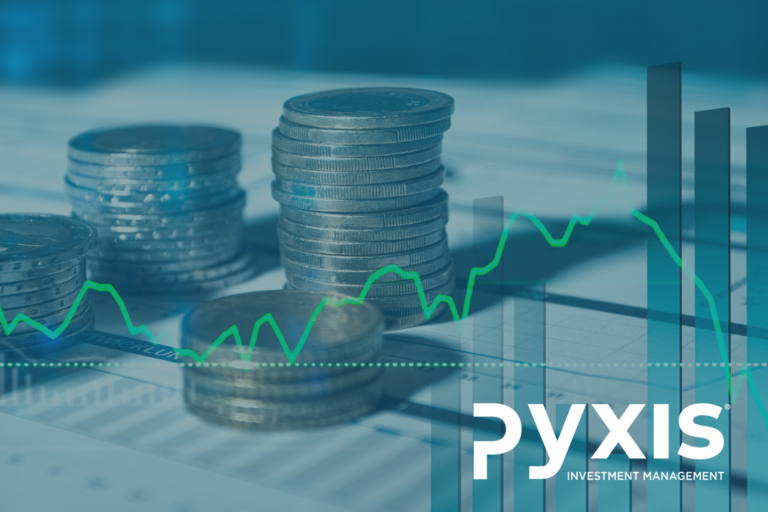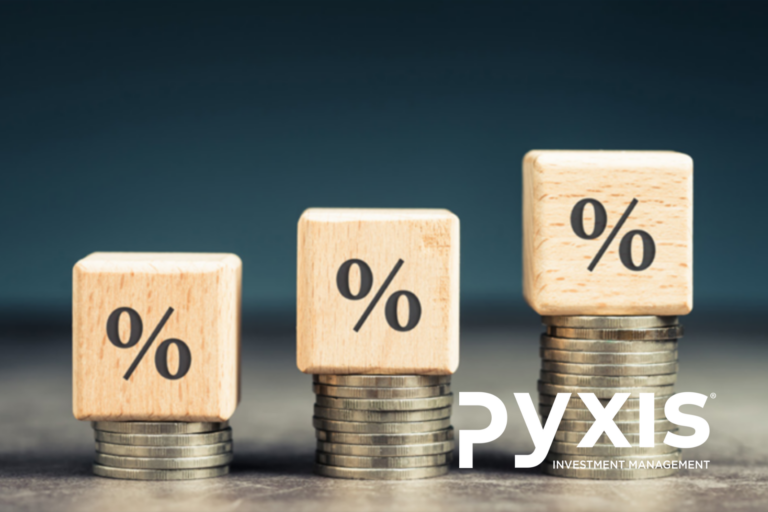At the beginning of May, we made reference to climate change and the potential impact on investing. From the 2014 Cowspiracy, to the 2021 Seaspiracy and the myriad of David Attenborough documentaries in between – climate change is one topic we are all familiar with. As far back as I can remember, I have been warned about the dire future we face on this planet if we don’t make a change.
With each passing year more people talk about it, but it often feels like just that – talk. Yes, we all have reusable shopping bags, and many of us do “meat free” Mondays, but how many of us can truly say we only employ practices which won’t harm the environment (never mind repair it)?
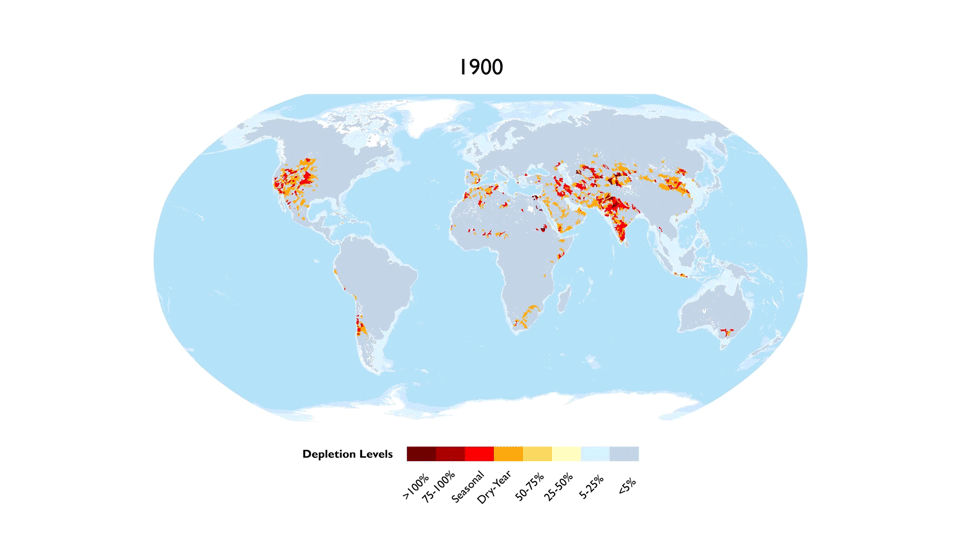
Source: The Nature Conservancy
Although climate change is always a hot topic, recent weather patterns have highlighted its impact on the world. This month, Europe saw record high temperatures, accompanied by heat waves and wildfires in the US. By 2030, it is estimated that the population will require 25% more energy, 35% more food and 40% more fresh water than we currently have.
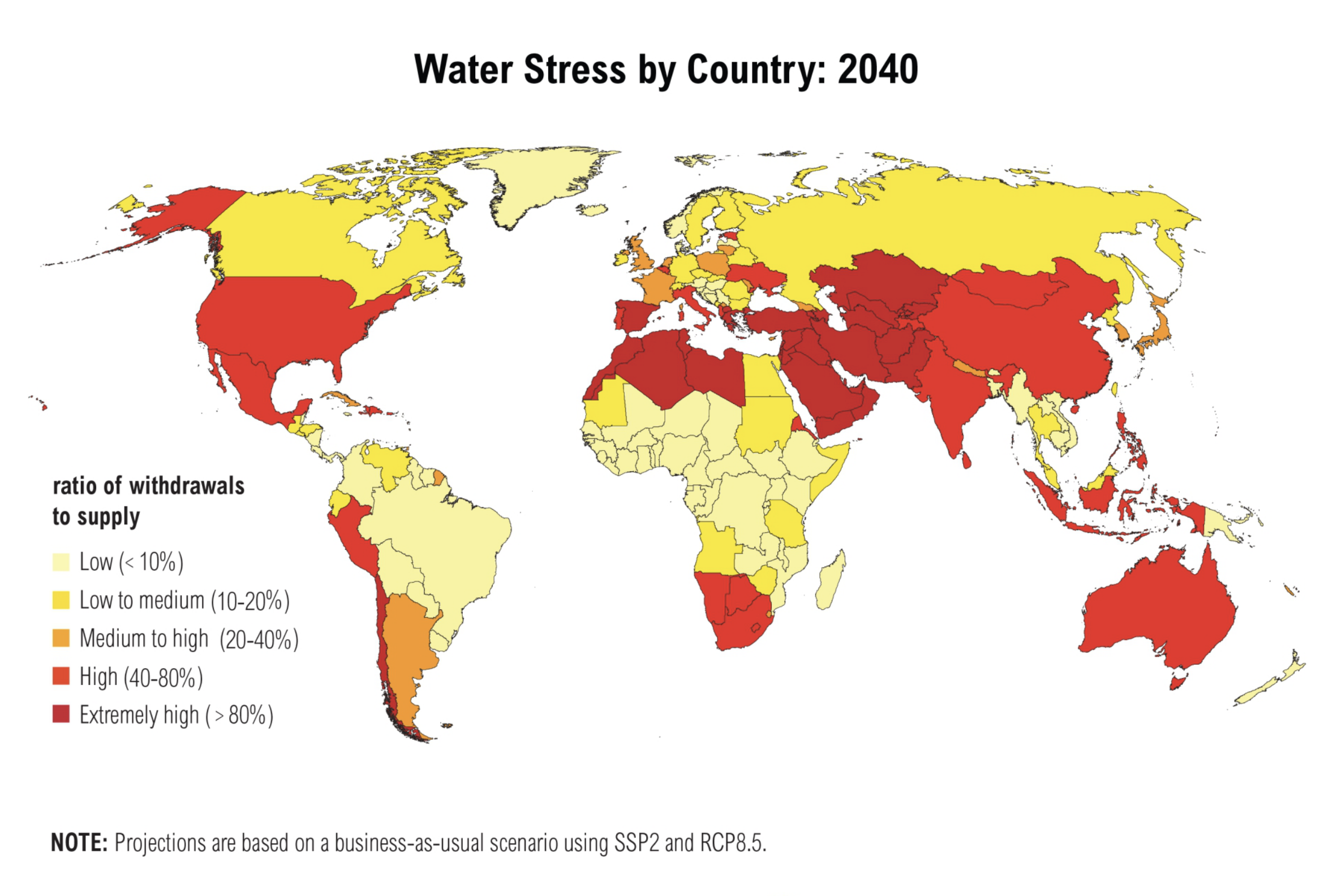
Source: The World Economic Forum
As is clear from most of David Attenborough’s documentaries, we can make a difference by changing our habits as the earth regenerates at an alarming speed when left to repair itself. The closer we get to Global Day Zero and the more realistic 2012 seems, humanity will be forced to act on then necessary changes. These changes will be permanent and as investors we should position ourselves to benefit from them.
Water and climate change go hand-in-hand. Extreme weather has a profound effect through natural disasters which seem to intensify year after year. Not only does climate change have an impact on weather patterns, it simultaneously impacts water availability and contamination. The relationship between water and climate change is two fold, as water stores carbon and thus has the potential to mitigate the effects of climate change.
In November last year, the US Infrastructure Investment and Jobs Act was signed into law. The Act frees up USD 1.2 trillion for infrastructure development and maintenance. The act focuses on rebuilding roads, bridges and railroads; as well as enhancing access to safe drinking water and high speed internet, assistance for the climate crisis and assistance for underdeveloped communities. Focusing on the investments towards water, USD 55 billion will be deployed towards water infrastructure. Across America, approximately 10 million households and 400,000 schools and childcare centres do not have access to safe drinking water. An additional USD 17 billion will be used to assist port infrastructure and water waste.
According to an article by the United Nations (UN) in 2020, 1 in 3 people live without safe drinking water. As humans, we can only survive without water for approximately 3 to 6 days. Clean water scarcity is one area humanity cannot afford to ignore. Below I have broken down some of the jargon related to water and water companies.
Wastewater and wastewater treatment
Wastewater refers to all the water used and expelled by households, businesses and industries, as well as stormwater which accumulates pollutants as it runs down roads or off houses. These various sources of wastewater must be treated before they can be reintroduced into the environment. When wastewater enters a treatment plant (pictured below), it is sieved to remove any solid contaminants, such as wood and rocks. This debris is taken to landfills. The wastewater is then exposed to air, usually in concrete tanks. These tanks are usually separated into two sections. In the first section, the wastewater is pumped with air which replenishes the oxygen content and forces any grit out. The extracted grit is similarly taken to landfills. In the second section, referred to as a sedimentation tank, the organic portion of the wastewater settles and is pumped out and processed in digesters. At this point the organic portion settles at the bottom of the tank and lighter materials, such as grease, oil, plastics and soap, rise to the top where it is raked off. Sometimes this liquid is passed through sand or carbon particles as a filter. After filtration, bacteria is killed using chlorine and then neutralised if necessary to remove any harmful chlorine content that remains. The treated water, or effluent, is then returned to the environment.
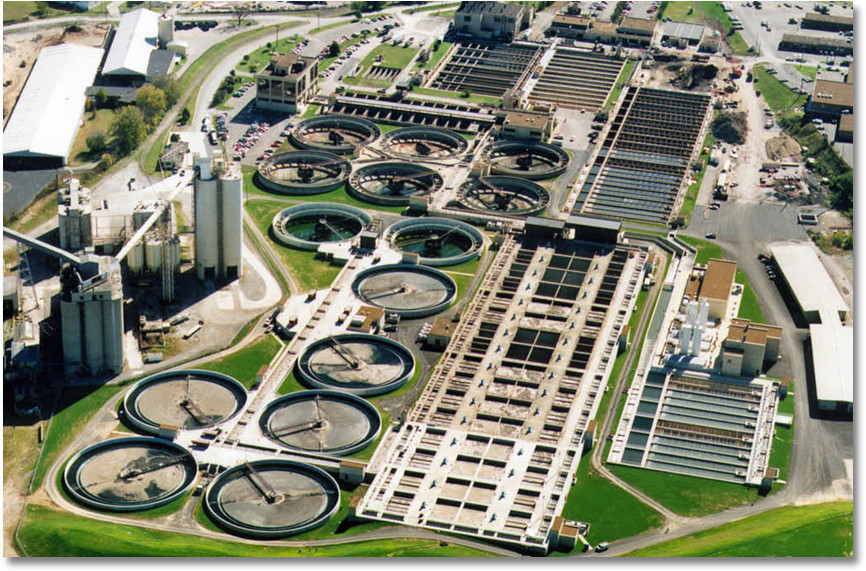
Source: Water Science School
Greywater
Greywater refers to wastewater from a household, namely from sinks, showers, baths and washing machines. Although greywater can contaminate natural bodies of water, it is perfectly safe to use in an irrigation system. When reusing greywater, one should only make use of plant friendly detergents and products to ensure the safety of the water when reused. Greywater can reintroduce nutrients into the soil. It is filtered by the soil and purified by the plants themselves. Any excess water replenishes groundwater levels.
Dewatering
Effectively removing water or reducing the amount of water in an area. The practice is often used in construction to prepare the area for foundation or excavation, as well as prevent mudslides. Water is extracted from the soil either by pumping it out or evaporation.
Applied water
The delivery of water to the end user. The term usually refers to agricultural or household users.
Desalination
Simply, desalination is the separation of salt from water through a process of reverse osmosis. Water is extracted and goes through an initial pre-treatment process. All impurities are removed to ensure that solely water and salt compounds remain. This salt water is passed through membranes at an extremely high pressure. The membranes are sized so that only H2O particles can pass through, salt is too dense and gets trapped on the other side. These specialised membranes are a large portion of the price of a plant, coming in between 7% and 10% of the cost, and have a typical lifespan of 7 years before they need to be replaced. The process of reverse osmosis results in approximately 40% to 50% pure H2O and 60% to 50% double salinity seawater. The latter portion is returned to the ocean. The pure water then undergoes a final treatment to de-purify it until it is safe for drinking. Carbon dioxide is injected into the water, followed by liquid lime. This combination adds to the calcium content of the water and makes it safe for consumption.
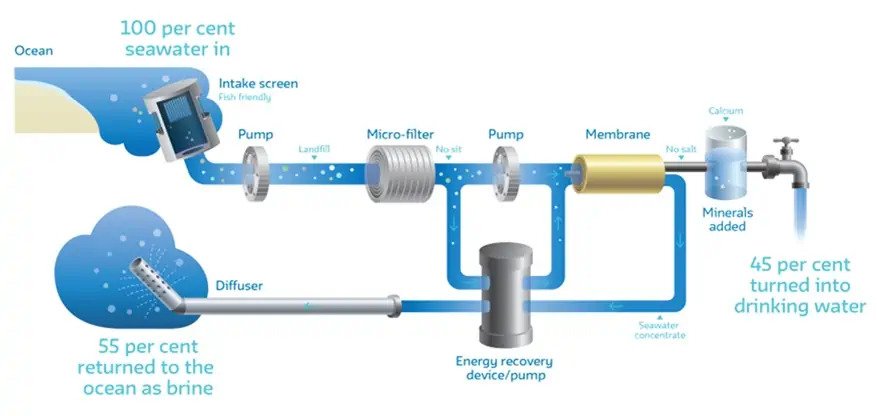
Source: Water Corporation
Technology and water sustainability
Technological advancements enable preservation of water as they improve the efficiency of those industries and appliances which make use of water. Maintenance and upgrades of deteriorating systems additionally contribute to the sustainability of consumable water. Some companies have been at the forefront of innovation within this area and have a head start when it comes to ensuring the availability of water. Over the past few months we have taken a look at some of these companies and what they have to offer. Below are a few companies who stood out.
American Water Works (AWK)
Founded in 1886, American Water is a water and wastewater utility company, operating across 24 US states and servicing approximately 14 million individuals. With a long-term compound annual growth rate (CAGR) of 9.6% in their dividend, it pays to be water wise. AWK is a resilient business which remains at the forefront of new developments. Their latest project, in partnership with NJR Clean Energy Ventures, is for the largest floating solar array in the USA. The plant aims to reduce the power costs at the Canoe Brook Water Treatment Plant by providing 95% of its annual power needs. The transformation will result in a reduction of approximately 7,800 metric tonnes of CO2.
Ecolab Inc (ECL)
Ecolab has been around since the early 1900’s. MJ Osbourn founded the company in 1923 to focus on innovation and customer service. Today, the group maintains that vision with over 44,000 employees and USD 13.11 billion in sales. Ecolab identifies the need for increased sustainability and improved safety as demand for various resources increases. The group focuses on reshaping the business landscape to one that is sustainable and safe. The company works in various industries, across which they managed to save 188 billion gallons of water last year (approximately 712 billion litres), with a target of 300 billion gallons by 2030 (approximately 1.14 trillion litres). To put that in perspective, it is sufficient drinking water for 1 billion people.
Danaher Corporation (DHR)
Originally established in 1984, Danaher reorganised its business in the nineties to benefit from sustainable competitive advantages in global markets – the first sector they focused on was water. The company is now considered a science and technology innovator, with the protection of water supply remaining an area of focus. Their Water Quality business focuses on technology within water purification, which facilitates the analysis, treatment, and management of water. Some of the companies found within the Water Quality business are Sea-Bird Scientific, McCrometer and Trojan Technologies. Sea-Bird Scientific supplies oceanographic sensors for autonomous ocean robots and for monitoring the health of oceans. Prominent within the agricultural sector, McCrometer enhances cropland productivity through increased water use efficiency. Trojan focuses on recycling wastewater, particularly in water-stressed communities. Water is recycled using UV systems which disinfect wastewater and provide safe drinking water within these communities. The group grew EPS by 12% in the last quarter (Q2 of 2022) without margins coming under pressure.
Xylem Inc (XYL)
Spun off from ITT corporation in 2011, Xylem focuses on new technologies which can protect and optimise water. The company operates across 7 continents, with products and services focused on water infrastructure, wastewater transport and treatment, dewatering and applied water. The group’s Vue solutions are in wastewater networks, treatment plants, drinking water networks and asset management. Across these segments, Xylem provides digital solutions which utilities, operators and the like can use in the decision making and design process. Information provided by Xylem facilitates more efficient project design and maintenance, thus reducing costs for the end user.
Veolia Environnement S.A. (VIE)
Veolia is a France based company focused on ecological transformation, namely using energy efficiently and combatting carbon emissions. The company has managed to run wastewater treatment plants in Rialto through the use of solar and biogas. The group is also researching the use of wastewater as an alternative energy source, specifically the production of zero carbon hydrogen from sewerage sludge. Veolia has been part of smart city development in Japan, preserving water resources and optimising drinking water and sewerage networks. During times of drought in Australia, a desalination plant managed to provide access to drinking water for the citizens of the Gold Coast. The plant was able to produce 50 Olympic size swimming pools of water each day. They are also working towards water for water scarce areas, such as Saudi Arabia. Veolia is another reliable dividend payer, with a yield of approximately 4.25% in EUR terms.
Climate change has become a popular topic amongst investors, and enquiries on the matter have increased over the recent past. Companies who operate in this space are often focused on research and development to be at the forefront of new technologies and advancements. The companies themselves can often exhibit higher volatility or pay lower dividends. As such, these investments are not always appropriate for an investor’s mandate or risk profile. Some companies may suit an individual risk profile and in other instances, it may be more appropriate to make use of a liquid ETF. As previously discussed with our themes, the inclusion of the sector via an ETF as opposed to individual company holdings, is preferred in order to gain a broad exposure to the sector at a cost-effective price, without adding an inappropriate level of volatility to the portfolio.
Another area of interest is renewable energy and when it comes to that topic, we can look even closer to home. Renergen has been making headlines due to their plant in Welkom which produces helium and liquified natural gas. Bennie has been doing research on the company and last week we had a meeting with them to delve deeper into their business model and the potential investment opportunity for our clients. Look out for Bennie’s analysis at the end of September.

